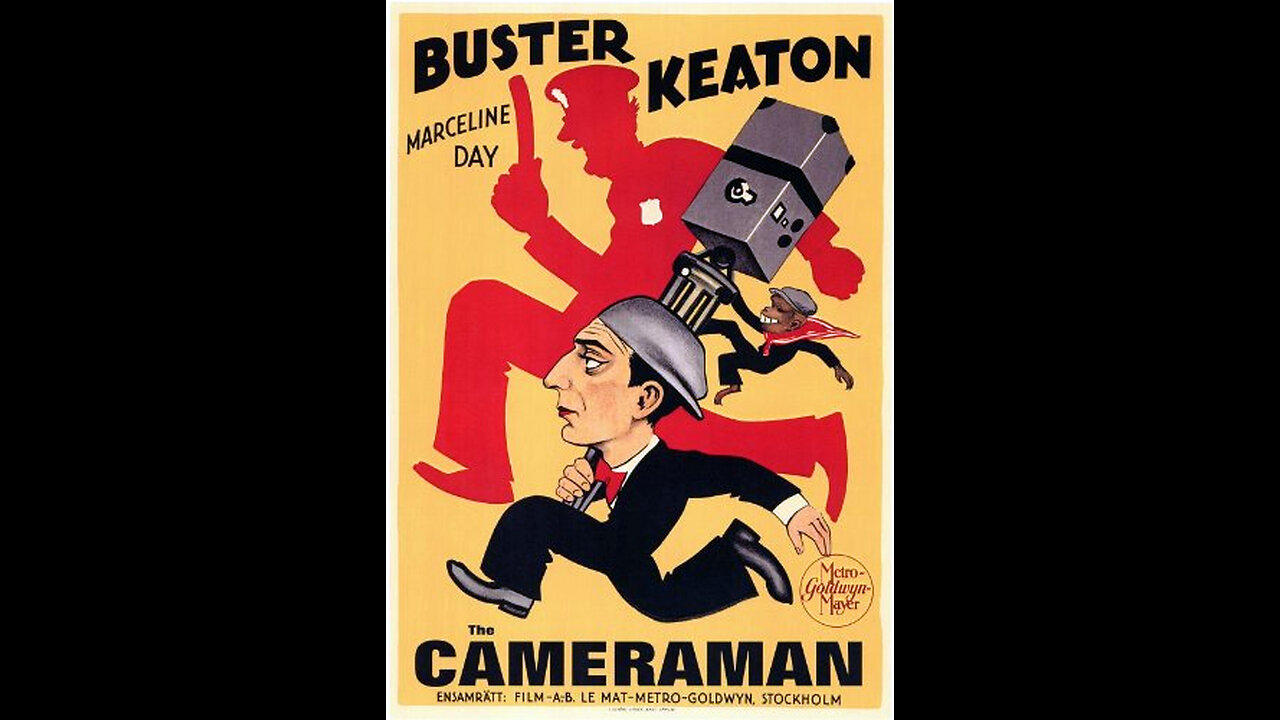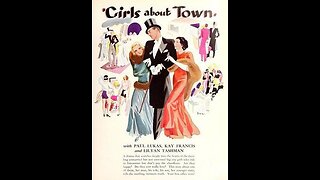Premium Only Content

The Cameraman (1928) | Directed by Edward Sedgwick and Buster Keaton
The Cameraman was released on September 16, 1928, during the late silent film era. This film, directed by Edward Sedgwick and Buster Keaton, tells the story of Buster (played by Keaton), a humble tintype photographer who falls in love with Sally, a secretary at a newsreel company. Determined to win her heart, Buster trades his camera for a movie camera and tries to become a newsreel cameraman. Throughout the film, Buster encounters various misadventures, including comedic mishaps with his new camera, a chaotic trip to a public pool, and a thrilling rescue during a Tong war in Chinatown. Despite his many failures, his determination and quick thinking eventually lead him to success, both professionally and romantically.
The Cameraman was one of Buster Keaton's last films as an independent filmmaker before moving to MGM, where he would lose creative control over his work. Initially, the film received mixed reviews and was not a major commercial success. However, it has since been re-evaluated and is now considered one of Keaton's best films. The film is praised for its inventive gags, flawless timing, and Keaton's ability to blend comedy with emotional depth. In 2005, it was selected for preservation in the United States National Film Registry by the Library of Congress for being "culturally, historically, or aesthetically significant."
Buster Keaton as Buster: The protagonist, a tintype photographer turned cameraman.
Marceline Day as Sally: The love interest and secretary at the newsreel company.
Harold Goodwin as Stagg: Buster's rival and a more experienced cameraman.
Sidney Bracey as the Boss: The head of the newsreel company who is skeptical of Buster's abilities.
The Cameraman is often hailed as a cinematic masterpiece, showcasing Keaton's unparalleled talent in physical comedy and visual storytelling. The film is noted for its complex and meticulously timed gags, such as the scene where Buster attempts to film a parade only to find that his camera was not loaded with film. Keaton's ability to create humor through situations that are both absurd and relatable makes this film enduringly popular. The use of innovative camera work and special effects also demonstrates Keaton's creativity and technical expertise. Although The Cameraman marked the beginning of Keaton's troubled tenure with MGM, it remains one of the finest examples of his work and a quintessential piece of silent film history.
-
 1:19:21
1:19:21
Classic Films & Movies Archive
8 days agoGirls About Town (1931) | Directed by George Cukor
3003 -
 1:01:40
1:01:40
VINCE
2 hours agoThe Democrats' Ticking Time Bomb | Episode 112 - 08/27/25
56.9K39 -
 LIVE
LIVE
LFA TV
4 hours agoLFA TV ALL DAY STREAM - WEDNESDAY 8/27/25
5,681 watching -
 LIVE
LIVE
Major League Fishing
5 days agoLIVE! - Fishing Clash Team Series: Challenge Cup - Day 4
249 watching -
 LIVE
LIVE
GloryJean
1 hour agoAggressive Solo Gameplay on Mouse & Keyboard 🖱️ 6.7 K/D
40 watching -
 LIVE
LIVE
The Pascal Show
45 minutes agoBREAKING! Mass Shooting At Annunciation Church In Minneapolis Multiple Shot
85 watching -
 1:43:04
1:43:04
Dear America
3 hours agoNo More IRS!! Tariffs Bring In Over $500 BILLION! + Taylor Swift Got ENGAGED… This Is A Nightmare!!
75.2K67 -
 LIVE
LIVE
Caleb Hammer
18 hours agoHe Just Sucks… | Financial Audit
66 watching -
 LIVE
LIVE
MYLUNCHBREAK CHANNEL PAGE
1 hour agoThe Population Was ZERO
443 watching -
 LIVE
LIVE
Wendy Bell Radio
6 hours agoTrump Cracks The Barrel
7,402 watching